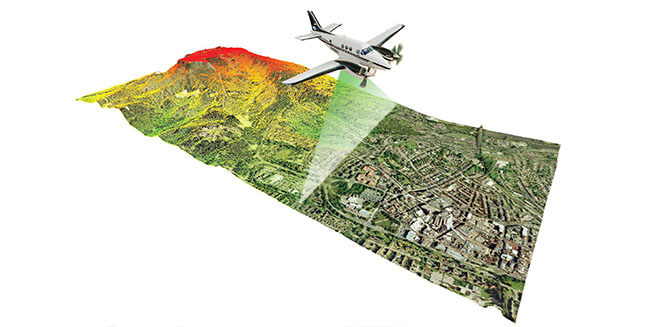Vast potential in making autonomous vehicles would boost LiDAR market

17 Apr
2016
LiDAR market is showing vast growth potential in automobile industry
Automakers and companies preparing self-driving cars for varied road conditions consider banking on advanced sensor and mapping technologies. Geospatial technologies have gained widespread adoption across automotive industry to make autonomous vehicles with a range of functions. Car makers use a combination of mapping technologies, along with artificial intelligence technology, to make self-driving vehicles as good as human drivers driving us into a safer and more fuel-efficient future. LiDAR is one of the many technologies used in making vehicles operate autonomously; other mapping sensors extensively used are GPS, inertial measurement units (IMU), wheel encoders and radars. LiDAR market is showing vast growth potential in automotive and automobile sector automakers are increasingly using the optimized technology to cash in on autonomous market segment.
But, is the LiDAR technology the most optimized technology in terms of functionalities, cost of LiDAR-equipped cars and viability for wide consumer adoption. Consider the Google’s self-driving cars which uses an array of sensing technologies: the huge LiDAR scanner that protrudes from the top of the Google Car costs around $70,000 alone too costly and too heavy. However, according to analysis by a global research and consulting organization, Frost and Sullivan, Lidar will emerge as the most preferred sensor suite for designing autonomous vehicles, surpassing all the other mapping technologies. Another analysis by Goldman Sachs Global Investment Research, projects that while LIDAR may be constrained by a slower path in adoption than most other more mature sensing technologies, it is expected at term to become the largest revenue generator of the sensor segment, surpassing cameras and radars from 2030 on.
Trends Adoption of LiDAR & Market ConstraintsSo then what are the factors that would trigger its widespread adoption over time? What are the factors that will persuade automotive manufacturers to incorporate LiDAR in various ADAS applications? Will the sensing technology be preferred over other ADAS sensor technology?
The recently concluded conference Autonomous Cars Silicon Valley in February may offer some potential insights into the technology and strategic landscape. In the post-conference report recently released, Amine Taleb, advanced projects, comfort and driving systems at Valeo confers: “LiDAR technology holds many of the aces needed to reach the autonomous goal”. He further adds, “These are very powerful characteristics of such a sensor that you cannot find in other sensors”. These findings does not imply that the sensor technology is going to replace other mapping technologies in automotive sector; at least, this is unlikely to happen in near future. However, they will be used in combination with other sensing technologies. Companies and OEMs exploring advanced tools, high-end sensors technologies looking to stir up the autonomous vehicle segment, including passenger car segment, consider the application of this technology as promising.
LiDAR sensors help autonomous Ford Fusions to Navigate Total DarknessThe biggest hurdles for driverless cars are not the cars themselves but the most optimized hybrid mapping technology that can steer clear of all the roadblocks. Varied driving environments-worn lane markings, shoddy roads, and confusing signage-coupled with other conditions such as complete darkness and complete snow covered terrain make it very difficult for self-driving cars to detect obstacles. Recently, Ford tested the viability of self-driving car in total darkness, and the result was amazing. The test conducted by the company at Arizona Proving Ground proved autonomous vehicles can drive in complete darkness without headlights or any human intervention, once again proving the immense potential of the technology.
The automaker has used Velodyne LiDAR in the autonomous Ford Fusion hybrids to make this possible. This was an expected development, since Ford has already announced last month at the SAE World Congress that it will be the first one to cash in on "Ultra Puck" LiDAR sensor by Velodyne; for a decade, the companies have been working closely to develop advanced LiDAR equipped cars. At CES earlier this year, the automaker had showcased an early prototype of the LiDAR pucks; the “Ultra Puck" LiDAR are the finished product developed specifically for automotive applications.
LiDAR Market ProspectsThe application of LiDAR is just not limited to automotive applications, though recent trends may suggest otherwise. The systems are increasingly being demanded among surveying and engineering communities, and across various application areas; the market demand is driven by extensive applications of aerial systems to explore and detect places, forested terrain, and historic details. These systems are preferred over other conventional surveying methods owing to their ability to generate highly accurate data and three-dimensional images in a shorter span of time. According to a recent report by Allied Market Research titled, "World LiDAR Market - Opportunities and Forecast, 2015 - 2022", aerial LiDAR dominated the market with over 50% share in 2015, and is expected to maintain its dominance through the forecast period owing to numerous applications in surveying. As per the report, the LiDAR market is estimated to garner $921.2 million by 2022, registering a CAGR of 18.5% from 2016 to 2022, globally. The market, in general, is driven by increased demand of 3D imaging technology across various applications.

Akhilesh Prabhugaonkar
Author's Bio- Akhilesh Prabhugaonkar holds a bachelor’s degree in Electronics Engineering from the reputed Vishwakarma Institute of Technology. He has a special interest in the fields of forensics, world history, international relations and foreign policy, sports, agriculture, astronomy, security, and oceanography. An ardent bibliophile and melophile, Akhilesh loves to write on topics of his interest and various other societal issues. This love for writing made him enter the professional world of content writing and pursue his career in this direction.
Avenue: Entire Library membership of Allied Market Research Reports at your disposal
- Avenue is an innovative subscription-based online report database.
- Avail an online access to the entire library of syndicated reports on more than 2,000 niche industries and company profiles on more than 12,000 firms across 11 domains.
- A cost-effective model tailored for entrepreneurs, investors, and students & researchers at universities.
- Request customizations, suggest new reports, and avail analyst support as per your requirements.
- Get an access to the library of reports at any time from any device and anywhere.
Related Post
-
How are Submarine Cables Transforming Global Connectivity with Enhanced User Experience?
-
Endoscopy Procedures: Transformations in Techniques and Applications
-
AI-Powered Video Analytics: How the Product Actually Works for enterprises
-
Painting Robots: Transforming Precision Coating and Creative Applications
-
Innovations in Pharmacovigilance Systems Advancing Patient Safety
-
Understanding Edge Security: Keeping Data Safe Near the Source
-
Exploring the Use and Advancements of 3D Laser Scanners in Professional Applications
-
Reinforcing Industrial Controls with Smarter Tools and Training








